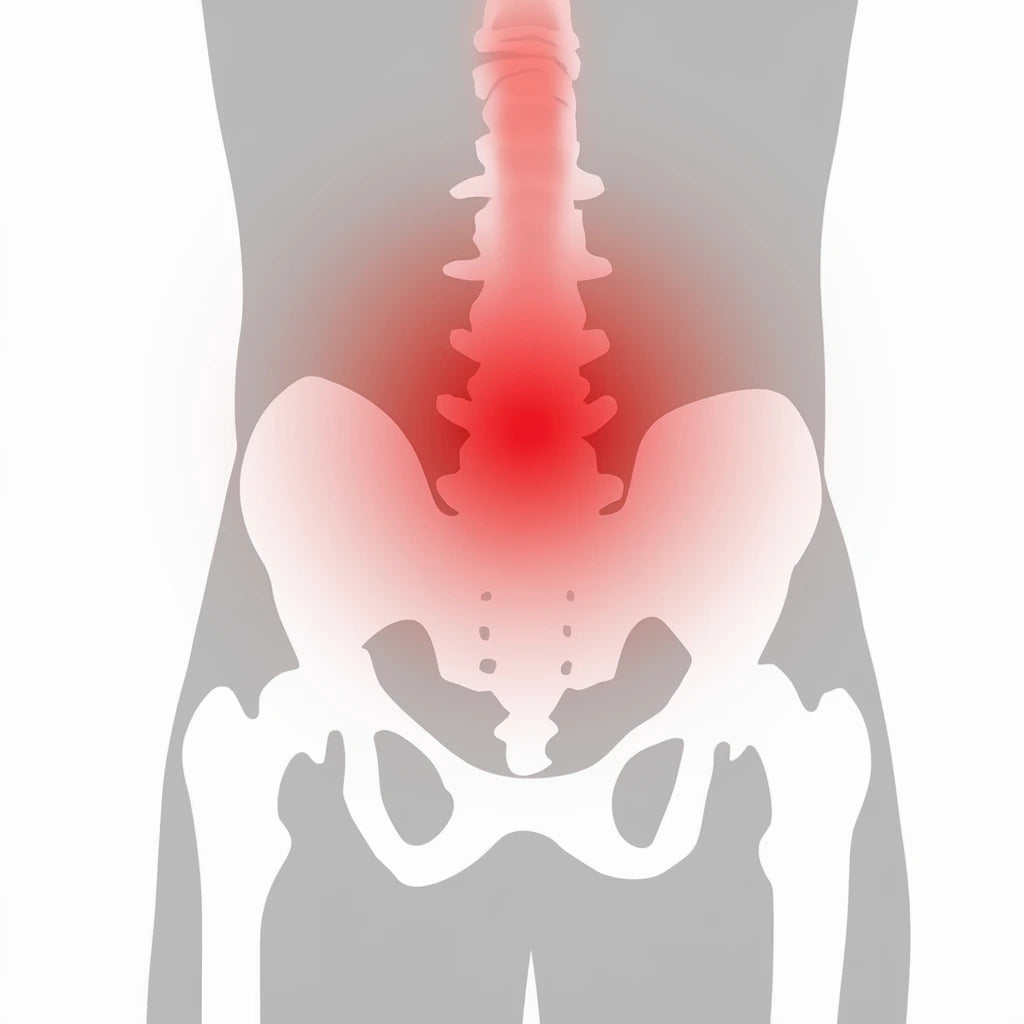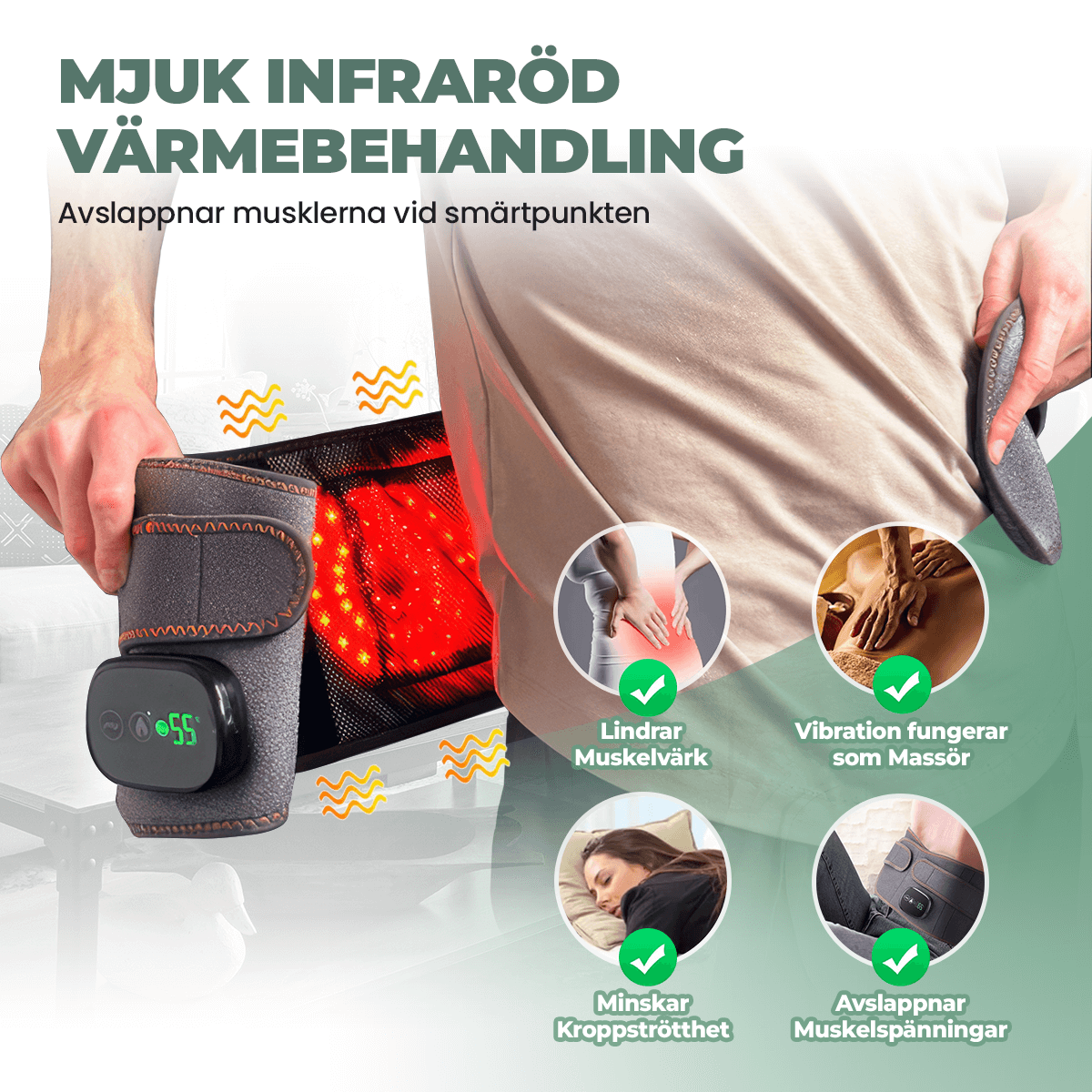Treatment of Back Pain: Symptoms, Causes, and Measures

Back pain (lumbago acuta) is a sudden and intense pain in the lower back that can significantly limit mobility. This acute low back pain can make it difficult to move and significantly affect everyday life. Most people experience back pain at some point in their lives. This article reviews the most common symptoms, causes, and treatment options for back pain.
What is the treatment for back pain?
Treatment for back pain usually involves rest, pain medication, and physical therapy. Cold and heat therapy can reduce muscle tension, and targeted exercises improve mobility. Consult a healthcare provider if symptoms are severe.
Symptoms of back pain
Common symptoms of back pain include:
- Sudden, intense pain in the lower back (lumbar spine)
- Difficulty moving, especially bending forward
- Muscle cramps or tension in the back muscles
- Pain that worsens with certain movements or positions
- Feeling of locking in the back
When back pain occurs, it often feels like your back is locked in a specific position. The pain can be so severe that it is difficult to move at all. In some cases, the pain radiates down your leg (sciatica), which may indicate nerve pain in your back .
Causes of back pain
Several factors can contribute to the development of acute back pain:
- Improper lifting or sudden movements, especially heavy lifting at a 90-degree angle
- Overloading or incorrect loading of the back muscles
- Poor posture or prolonged sitting in inappropriate positions
- Stress and muscle tension affecting the lower back
- Underlying back problems such as herniated discs or inflammation of ligaments
In some people, back pain can be triggered by factors such as a stiff back , especially in those with a sedentary lifestyle or poor mobility.
Diagnosis and treatment of lumbago
Lumbago occurs when muscles or joints in the lower back suddenly cramp or become inflamed. The pain can come on suddenly, often after lifting something or making a sudden movement. With the right combination of movement, heat, and support, you can speed up your recovery and reduce the pain.
Movement and activity
Continue to move gently, even if it feels uncomfortable. Prolonged rest can delay healing.
RyggKomforten™ provides stability and support during movement, making it easier to maintain a natural posture.
Pain relief
Anti-inflammatory medications (over-the-counter) can be used temporarily to relieve pain.
Regular heat treatment with Termoreliever™ can reduce the need for medication by providing natural relief.
Heat and cold therapy
Heat helps muscles relax and increases blood flow, while cold reduces swelling in acute pain.
Termoreliever™ offers both heat and cold functions to suit your recovery.
Physical therapy
As the pain begins to subside, exercises with a physical therapist or chiropractor can strengthen the back muscles and improve posture.
RyggKomforten™ complements the training by providing stability and support during recovery.
Tips for acute discomfort
During the first few days, you can place a pillow under your knees when resting to reduce pressure on your lower back. Try to find a position that feels as pain-free as possible. As the pain subsides, stretching and gentle movement can help relieve muscle tension.

How RyggKomforten™ and Termoreliever™ can help with back pain
RyggKomforten™ and Termoreliever™ offer several benefits for people with back pain:
- BackComfort™ provides support and stability to the spine, which is helpful when you have lower back pain.
- Termoreliever™ offers both heat and cold therapy to relieve pain and reduce inflammation
- The combination can help reduce muscle tension and cramps
- The products can be used during daily activities for continuous support, making it easier to stay active even with back pain
- Contributes to faster recovery and reduced risk of back pain recurrence
Use a stool or similar to relieve the strain on your back when sitting, especially if your back is causing intense lower back pain.
Conclusion
Treatment for back pain focuses on pain relief and restoring normal function to the back. By combining movement, appropriate rest, and the use of supportive devices such as BackComfort™ and Termoreliever™, many people can effectively manage their symptoms and speed up recovery. It is important to listen to your body's signals and gradually increase your activity level to avoid relapse. It can sometimes take time to become completely pain-free, but with the right measures, you can usually return to normal activities within a few weeks.
In case of severe pain that radiates down the legs or does not improve , sciatica in the back may be an underlying cause to consider.
Frequently Asked Questions (FAQ)
How long does a back injury usually last?
Most cases of back pain improve within a few days to two weeks with proper treatment.
Should I rest completely for back pain?
No, total rest is not recommended. Try to move as much as you can, even if it hurts a little.
Can RyggKomforten™ be used directly in the event of an acute back injury?
Yes, the BackComfort™ can be used to provide support and stability, but be careful and listen to your body.
How do I use Termoreliever™ for back pain?
Use cold therapy for the first 48-72 hours to reduce inflammation, then heat therapy can be used to increase blood circulation and reduce stiffness.
When should I seek medical attention for back pain?
Seek medical attention if the pain is very intense, lasts longer than two weeks, or if you experience other symptoms such as numbness or weakness in your legs.

